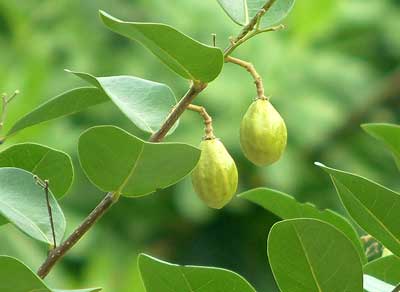
The fruit of a West Indian tree that grows up to 3 metres(9 ft) in height and bears an edible fruit, similar to the plum, which may be coloured yellow, purple or black.
An heirloom variety of courgette (US: zucchini) with vibrant stripes which make them look almost reptilian, and meaty flesh.

The cod is a large marine fish with khaki green back with small, yellowish spots and a creamy silver underbelly. It has a distinctive barbel under its chin. It is a versatile fish with good flavour and cooking properties. The young are called codling and are of a size to be sold whole. There is an obscure variety called torsk. Cod is related to hake, haddock, coley, ling, pollack and whiting. In common with haddock, the cod has been overfished and is an endangered species. There is much pressure on the British public to eat other fish in its place. Some supermarkets are now even offering free fish to promote other perfectly edible, better than edible, types of fish. So that if you go to the fish counter and ask for cod you might be asked if you would like to try megrim or coley instead.

A coddled egg is a just barely cooked egg which can be achieved by putting the egg in a bowl, pouring boiling water over it and leaving it for ten minutes. This provides an egg perfect for serving a part of a Caesar salad. The way favoured in the UK is to break an egg into a buttered porcelain container with a lid, preferably a coddler, only just larger than the egg. This is then cooked in a bain marie for about 7-8 minutes, depending on the size and freshness of the egg. Milo has this down to a T.
Cod's roe is fresh from December to the end of February. It is used in making taramasalata. Known as ‘trousers’ to the Scots.
Known in Yorkshire as smear and in Japan as Children of the Gods, cod's sperm is a great delicacy. Its flavour is bland and difficult to describe, except that it does not taste like fish. Its texture and appearance resemble tofu. In Japan this may also refer to the sperm of a sea bream.